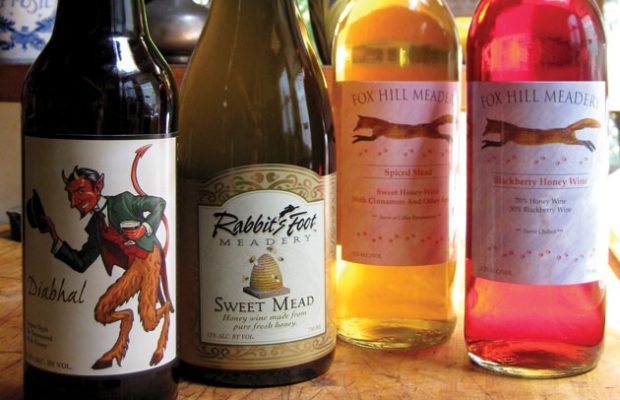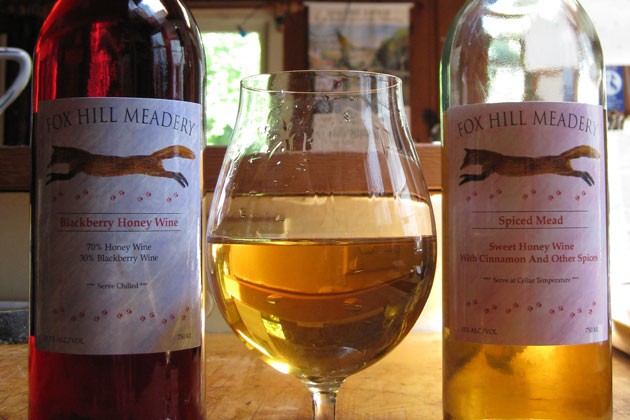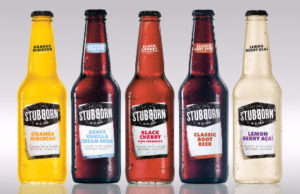Beer Me: Fermented Honey

Our favorite bubbly beverage just may be beer. For other occasions—like when we’re feeling a bit more culinary or just want a faster kick—we often reach for wine, and together these forces of alcohol make our world go happily ‘round.
But there is another. It has been antiquated, almost forgotten entirely, but in the Middle Ages it ruled Europe almost as surely as gravity itself, and its name still sounds mysteriously among small circles of educated drinkers and historians: mead. It is brewed from honey, which was probably the first sweetener used by humans and was almost certainly fermenting spontaneously in caves and trees long before hominids had even gained a taste for alcohol. Bears and primates, perhaps, got drunk on such finds before mankind made a habit of happy hours and hangovers. Eventually, such elements became components of the human condition as we brewed and fermented to satiate our desires, and in northern Europe honey became the leading alcohol base in a region too cold to produce grape wine.
Mead was the foremost product of these far-north brewers, but as barley-based beer brewing took hold, malt, honey and hops sometimes landed in the same kettle. The results of such recipes were called braggots, or beers made in combination with honey. Also common in the old days were cysers, or apple ciders built upon a honey base, and when grape wine met with fermented honey, the drink was called pyment. All other fruit wines fermented with honey were called melomels.
Modern wine and beer cultures have mostly buried such vocabulary and tradition, but they remain alive. In Sunnyvale, California, in the heart of Silicon Valley and a stone’s throw away from Yahoo! headquarters, Rabbit’s Foot Meadery ferments more honey into ancient beverages than any other facility in the nation. The Sweet Mead carries aromas and flavors of musky honey, powerful mint and mouthwash—and I mean that in a very good way. The Raspberry Mead is the same drink fermented from the same wildflower honey, except that owner and mead-maker Mike Faul adds pure, fresh Oregon raspberry juice before bottling. The result is a pinkish, slightly sour drink redolent of honey and of mouthfuls of fresh berries. Meanwhile, the braggots are bottled and served more in the style of beer. One, the Diabhal, is modeled after a Belgian ale, while the Honey Red is brewed in the style of an Irish red ale. Each is made using wildflower honey and tastes like the beer it almost is, with the heavy scent of honey lingering in the background.
In the eastern United States, North Carolina’s Fox Hill Meadery brews five diversely flavored meads and melomels. Though they contain between 11 and 16 percent alcohol and come bottled in 750 ml size, the blackberry melomel, ginger-apricot melomel, spiced mead, traditional mead and slow-aged “Special Reserve” mead are perhaps less like wine than they are like craft beer. Wine, after all, is about the pursuit and perfection of grapes, and winemakers themselves are trained—even required by law—to think in terms of grapes and nothing more.
“But creativity,” says Fox Hill owner and brewer Jason Russ, “is what craft beer is all about.”
Fox Hill’s Spiced Mead contains cinnamon, cloves, allspice and orange peel and tastes like sweet honey-scented pumpkin pie topped with marmalade. The Special Reserve mead is the strongest in the bunch, and at 16 percent ABV has a warming effect in the mouth. Its flavors are flowery and even a bit starchy on account of the buckwheat honey in the blend. Russ also ages the Special Reserve two years in oak barrels before bottling the mead, a process that leaves its mark in flavors of faint whiskey and rich butter. The Ginger-Apricot Honey Wine tastes crisp as freshly chewed ginger root, the spiciness lingering long and hot after just a sip. Like all the rest we tasted, the flavors of honey underscore the other elements.
On the West Coast at Bison Brewing Company in Berkeley, for example, brewer Dan Del Grande has just entered the braggot ballgame by adding a dollop of honey to a light pale ale, plus fresh basil. The bottled brew—as savory as pesto—is marketed as a honey-basil “beer,” since it contains not enough honey to qualify as a braggot.
Not that the word would sell the product, anyway. Faul at Rabbit’s Foot once tried marketing his braggots to several Bay Area beer bars as “braggots.” They wouldn’t take them, claiming that beer drinkers wouldn’t understand. Faul, today, agrees.
“Because no one has a clue what a braggot is, and it’s the same with cysers,” he says. “If you call these anything but a ‘cider’ or ‘beer with honey,’ it won’t sell.”
He has, in fact, given up on using the words melomel, cyser and braggot, relegating them to the recycling bin and the annals of history. In the craft brew aisle, however, honey beers and honey wines still live on.
Click here to view original web page at dirtragmag.com




















